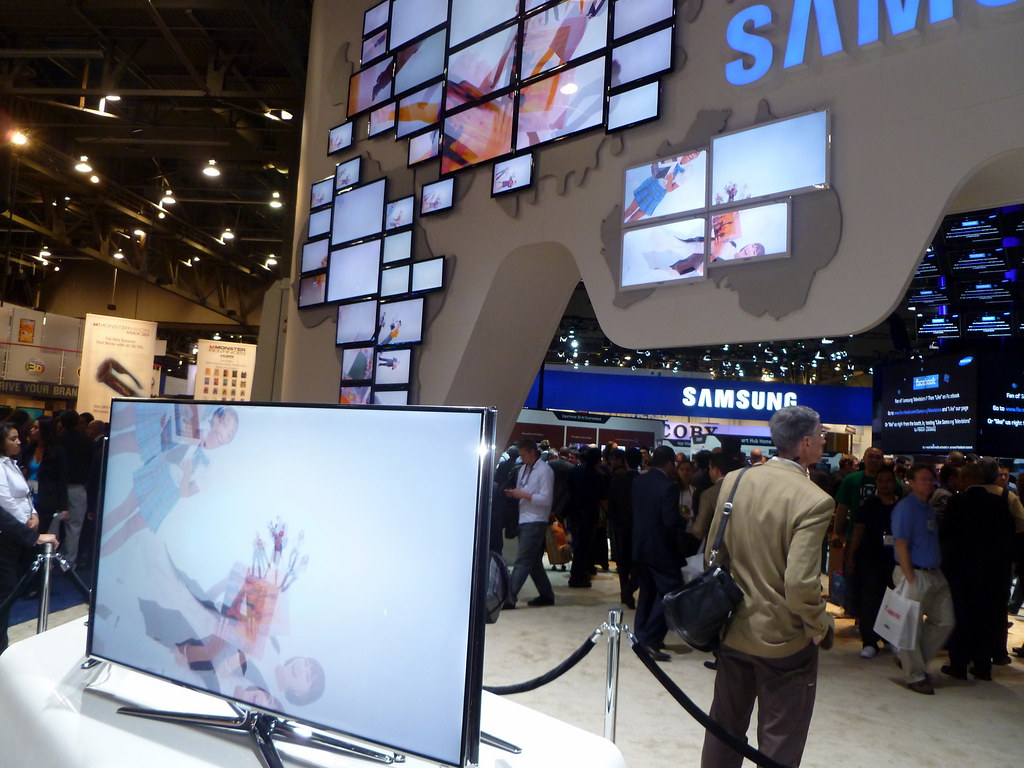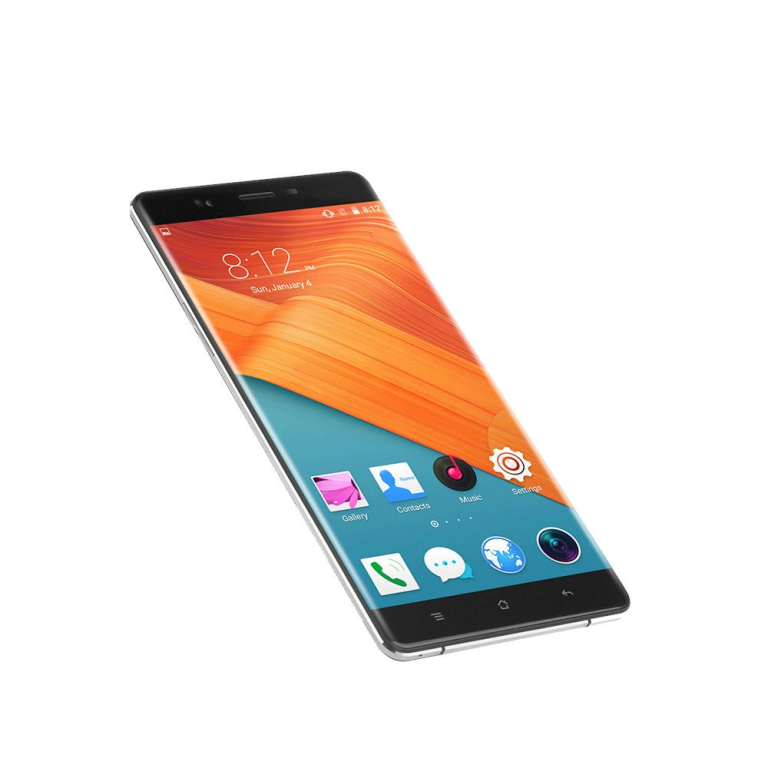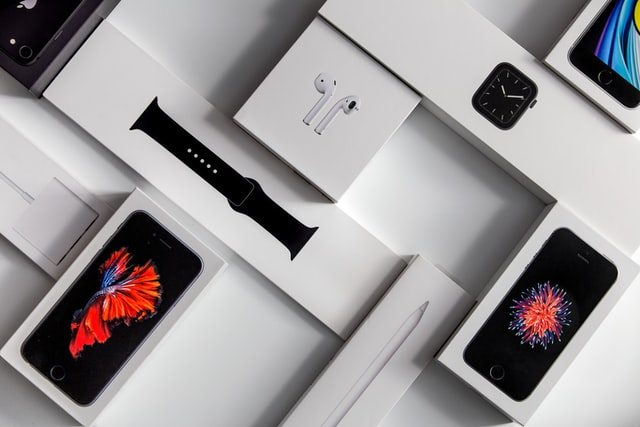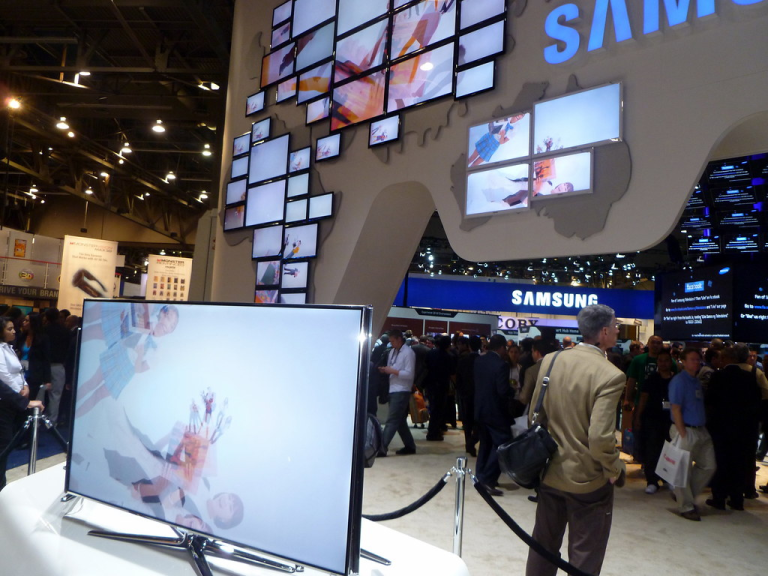
The Consumer Electronics CES 2011 showcased a thrilling glimpse into the future of technology, captivating visitors with a dazzling array of innovations. Held in the vibrant city of Las Vegas, this year’s event highlighted the surge of new gadgets including revolutionary smart TVs, stunning 4K TVs, and cutting-edge high-tech cars. Attendees were treated to demonstrations that showcased the evolution of TV technology, offering enhanced viewing experiences that promise to make older models obsolete. As tech enthusiasts flocked to booths revealing the latest trends in consumer electronics, it was impossible to ignore the buzz surrounding gadgets designed to seamlessly connect our lives. CES 2011 reiterated its place as the premier event for unveiling the future, setting the stage for an exciting year ahead in the world of consumer electronics.
At the forefront of technological advancement, the annual CES 2011 in Las Vegas emerged as a pivotal platform where the latest consumer gadgets were unveiled. This premier electronics exhibition drew attention to high-resolution displays and intelligent automotive technology, illustrating the rapid evolution in home entertainment and transportation. From the impressive lineup of ultra HD television models to the rise of smart vehicles integrating advanced infotainment systems, the show highlighted a significant shift in consumer preferences towards high-quality, interconnected devices. The cutting-edge demonstrations provided invaluable insights into how these innovations could redefine our interactions with technology in everyday life. With a focus on trends such as 4K resolution and augmented smart capabilities, CES 2011 stands out as a milestone event that illustrates the intersection of entertainment and technology.
The Evolution of 4K TVs and Their Impact on Home Entertainment
The technological advancements displayed at CES 2011 highlighted the emergence of 4K TVs, revolutionizing the home entertainment experience. Unlike standard full HD, which is limited to a resolution of 1920 x 1080, 4K TVs boast a resolution of 3840 x 2160, effectively collating four times the pixels into a single image. This resolution leap translates into sharper and more vibrant visuals, making every viewing experience more immersive. As consumers become accustomed to the clarity and detail offered by 4K, traditional HD models may quickly fall out of favor, forcing manufacturers to adapt and innovate in order to keep up with consumer demand for high-definition content and viewing experiences.
Major players in the TV industry are already introducing large selections of 4K models to stay competitive in this evolving market. As production technologies improve and content becomes available, the transition to 4K is inevitable. For consumers who are enthusiastic about home cinema, owning a 4K TV is not just an upgrade; it is becoming a necessity in order to fully enjoy the latest cinematic releases that are shot and produced in high resolutions. With manufacturers racing to release their 4K offerings, it’s clear that this trend will dominate the consumer electronics landscape for years to come.
The introduction of 4K displays is more than just a visual upgrade; it signifies a broader trend in the consumer electronics industry where higher resolutions lead to improved functionality and user experience. At CES 2011, we saw manufacturers addressing the challenges posed by 4K technology, from new broadcasting methods to the creation of upgraded content that meets the demands of this new standard. As streaming services gear up to provide 4K content, consumers are encouraged to embrace this transition, knowing that their investment aligns with future developments in television broadcasting. This foresight highlights the importance of keeping up with evolving technology, which will ultimately contribute to a richer entertainment experience.
The Rise of Smart TVs: The Future of Home Connectivity
Smart TVs made significant strides at CES 2011, showcasing the importance of connectivity in modern households. Equipped with integrated apps, Wi-Fi, and the ability to connect with smartphones and tablets, these televisions are becoming central hubs for entertainment. Major brands are racing to build smarter models that go beyond mere television viewing, allowing users to browse the internet, stream videos, and connect with other smart devices seamlessly. The convergence of technology indicates that televisions are not just passive devices anymore; they are evolving into interactive platforms that enhance the viewing experience by offering endless content options without the need for extra hardware.
One of the standout trends observed during CES was the ease of connectivity; for instance, Panasonic introduced features that enable users to flick content from their tablets directly onto their TVs. This kind of intuitive interaction speaks to the future of consumer electronics—where devices are not only smarter but also more coherent in how they interact. As manufacturers work towards refining their operating systems and user interfaces, consumers can expect even greater convenience and customization in their viewing experiences moving forward.
As Smart TVs continue to evolve, manufacturers face the challenge of creating unified and user-friendly operating systems that can accommodate various apps without fragmenting the user experience. While some companies are adopting Android or similar platforms, many are developing proprietary systems—which could lead to inconsistencies in app availability and compatibility. This trend could drive consumers towards a preference for specific brands that provide a more cohesive viewing ecosystem, as they seek flexibility and ease of use. Ultimately, the ongoing advancements in Smart TV technology signal a dramatic shift in how we engage with home entertainment, reinforcing that television is a shared, interactive experience.
3D TV: The Future of Viewing Experiences
At CES 2011, the advancements within the realm of 3D TV were striking, with several companies showcasing new technologies that promise a more immersive viewing experience. Unlike traditional methods that required cumbersome glasses, some manufacturers, like LG and Sony, have explored the potential of glasses-free 3D viewing. By introducing 4K displays, these brands aim to enhance 3D technology significantly, reducing common issues like motion blur and visual discomfort that often accompany 3D viewing. This shift not only makes 3D television more accessible but also appeals to a broader audience who demand a seamless and engaging visual experience.
The push towards glasses-free 3D TVs is indicative of how consumer preferences are shaping technological innovation. With viewers increasingly seeking convenience, the industry is responding to these trends by enhancing product design and functionality. While challenges remain—such as achieving optimal viewing angles—exhibitions at CES demonstrated that manufacturers are actively working towards overcoming these obstacles. As this technology continues to improve, it may just reignite consumer interest in 3D content, pushing it towards mainstream acceptance.
The future of 3D television hinges on its ability to deliver compelling content that resonates with consumers. As the technology behind 3D displays matures, manufacturers must also focus on curating high-quality content that takes advantage of these advancements. The exploration of new content formats, partnerships with filmmakers, and the development of immersive viewing experiences will play an integral role in the success of 3D TV in coming years. As consumers become more familiar with the capabilities and advancements of 3D technology, its integration into daily viewing habits could transform the landscape of home entertainment, ultimately emphasizing the need for continuous evolution in how we experience media.
High-Tech Cars: The Future of Automotive Innovation
The shift in focus from aftermarket car audio systems to high-tech automotive displays at CES 2011 highlighted an exciting evolution in the automobile industry. Major manufacturers like Mercedes Benz, Audi, and Ford showcased their latest models featuring state-of-the-art technology that caters to modern consumers’ desire for connectivity and entertainment on the road. These innovations signify a move away from entertainment systems that merely enhance audio quality, to integrating sophisticated infotainment systems that enhance driving safety and convenience while providing excellent multimedia options.
The commitment from automakers to develop high-tech cars with connected features points to a future where all vehicles will operate as extensions of our digital lifestyles. The integration of advanced touchscreen displays, hands-free operation, and connectivity with smartphones reflects a consumer expectation for their vehicles to mirror their tech-savvy lifestyles. As manufacturers hone in on these trends, we can expect to see further enhancements in auto electronics that revolutionize user experience and redefine what we expect from modern transportation.
As technology continues to permeate the automotive sector, the convergence of smart features and high-performance vehicles creates a unique opportunity for innovation. The reader’s experience at CES 2011 suggests that the future of cars will not only be about performance but also about enhanced passenger experiences, as seen in ultra-modern displays designed to manage everything from navigation to entertainment efficiently. The introduction of heads-up displays and gesture-based controls exemplifies how the industry is striving for a driving experience that is safer and more captivating. Looking ahead, it’s clear that we are on the brink of a new era in automotive technology, one that emphasizes integration, convenience, and an impeccable user experience.
A Look at Touchscreen Laptops and the Impact of Windows 8
The unveiling of touchscreen laptops, specifically Lenovo’s Yoga at CES 2011, showcased a very promising shift in personal computing. With the anticipation of Windows 8’s release, the potential for laptops to function as both tablets and traditional computers has generated excitement in the tech community. Lenovo’s innovative design exemplifies the flexibility and adaptability that modern consumers are seeking in their devices. By integrating touchscreen technology into their laptops, manufacturers are keen to leverage the advanced features offered by Windows 8, making it a pivotal time for the development of hybrid devices.
Laptops equipped with touchscreen capabilities represent a drastic change in user interaction, allowing for more intuitive navigation and a seamless blend of touch and keyboard functionality. This evolution indicates a growing recognition of consumer preferences for interactive and adaptive devices that fit into their lifestyle. As Windows 8 gains traction, it is likely that more manufacturers will follow suit, incorporating touchscreen features into their laptop designs, thus reshaping the landscape of personal computing.
As touchscreen technology becomes more prominent in the laptop market, consumers can expect to see further diversification in device capabilities. With the advent of touch-friendly operating systems like Windows 8, the potential for innovative applications and user interfaces will expand significantly. The combination of traditional computing with touch features offers an exciting glimpse into the future of laptops, which may soon render conventional models less desirable. The continued evolution of these devices highlights the tech industry’s commitment to meeting evolving consumer demands, signaling that the days of standard laptops may soon be numbered in favor of more interactive, multi-function devices.
Smartphones of the Future: High-Resolution Displays and 4G Streaming
At CES 2011, we witnessed the rapid evolution of smartphones, showcasing models featuring resolutions surpassing Apple’s renowned Retina display. The competition among smartphone manufacturers is driving the level of innovation that consumers have come to expect. With the introduction of high-resolution screens and the capability to stream HD content over 4G LTE networks, these devices are becoming indispensable tools in our daily lives. This technological leap addresses consumers’ desires for enhanced visual experiences that complement their mobile lifestyles.
As smartphones become the primary devices for consuming media, the challenge of maintaining battery life while supporting high-definition video streaming is at the forefront of development. Manufacturers are prioritizing battery efficiency and resilience, ensuring that the advanced features don’t drain power as quickly as they are utilized. This balancing act of innovation and practicality reflects the industry’s commitment to enhancing the overall smartphone experience.
The rapid pace of smartphone releases at CES underlined how technology is pushing boundaries, often rendering older models obsolete within a short span. The drive for high-resolution displays and HD streaming capabilities signifies an ongoing race to capture consumer attention in an ever-competitive market. Meanwhile, the necessity for powerful batteries has prompted manufacturers to invest in advanced technologies and materials that support prolonged use without compromising performance. As these devices become central to our daily routines, the integration of state-of-the-art displays and streaming capabilities will undoubtedly continue to shape consumer preferences, setting new standards for excellence in mobile technology.
Frequently Asked Questions
What were the key trends in Consumer Electronics CES 2011?
At CES 2011, we witnessed several key trends such as the introduction of more 4K TVs, advancements in smart TVs with enhanced connectivity, and the rise of high-tech cars equipped with sophisticated infotainment systems. These innovations signaled a shift towards sharper displays, better viewing experiences, and innovative automotive technology.
What advancements in 4K TVs were showcased at CES 2011?
CES 2011 highlighted significant advancements in 4K TV technology, showcasing models that doubled the previous Full HD standard of 1920 x 1080 to a stunning 3840 x 2160 resolution. This leap in display technology promised viewers a more immersive experience, paralleling the evolution witnessed during the transition to HD.
How are smart TVs evolving according to CES 2011?
The evolution of smart TVs was a major focus at CES 2011, with manufacturers unveiling models that not only connect to the internet but also support applications for enhanced user interaction. Companies like Panasonic demonstrated intriguing interfaces that allowed users to seamlessly interact with content across devices, underscoring the move towards more integrated smart home solutions.
What is the importance of glasses-free 3D TV technology seen at CES 2011?
CES 2011 showcased the potential of glasses-free 3D TV technology, particularly in Sony’s autostereoscopic 3DTV prototype. By combining this technology with a 4K display, the demonstration promised a more engaging 3D viewing experience without the inconvenience of glasses, ensuring comfort and accessibility for viewers.
What new features in high-tech cars were presented at CES 2011?
CES 2011 featured an impressive array of high-tech cars, shifting the focus from aftermarket audio systems to automotive manufacturers like Tesla and Ford, showcasing vehicles equipped with advanced touchscreen displays and heads-up display technology. These innovations aimed to enhance driver experience by simplifying controls and improving road safety.
What significance do touchscreen laptops hold as per CES 2011?
At CES 2011, the launch of touchscreen laptops, such as Lenovo’s Yoga, illustrated the growing trend towards versatile computing devices. These laptops, designed to support the new touch-friendly Windows 8, highlight the industry’s shift towards more adaptable and user-friendly interfaces, blurring the lines between laptops and tablets.
Which smartphones stood out at CES 2011 and what features did they have?
CES 2011 saw several standout smartphones, notable for their high-resolution displays exceeding Apple’s Retina technology. Many of these devices were equipped to stream HD content over 4G LTE connections, showcasing the industry’s commitment to delivering superior multimedia experiences in mobile technology.
| Key Point | Details |
|---|---|
| Future TVs Will Be Sharper | Transition to 4K resolution (3840 x 2160) from full HD (1920 x 1080) is underway, promising significantly sharper image quality. |
| 3DTV Innovations | LG’s 4K passive 3DTV shows smoother viewing experience; effort underway to minimize the need for glasses in 3D viewing. |
| Smart and Connected TVs | Next-gen TVs will run apps and connect with devices, though standard OS may not materialize due to varied manufacturer approaches. |
| High-Tech Automobiles | Major automakers showcased cars integrated with high-tech features rather than aftermarket enhancements seen in previous years. |
| Auto Consoles and Infotainment Systems | Cars now feature touchscreen or gesture-based displays for controls, improving driver interaction without diverting focus from the road. |
| Laptops with Touchscreens | Lenovo’s Yoga laptop provides ultimate flexibility, a sign of rising popularity for touchscreen in laptops ahead of Windows 8 launch. |
| Advanced Smartphones | New smartphones feature higher resolutions than Retina, capable of streaming HD content over 4G LTE, addressing fast-paced tech changes. |
Summary
Consumer Electronics CES 2011 showcased a plethora of groundbreaking technologies that are set to transform our everyday experience with gadgets and vehicles. From the emergence of 4K resolution TVs that promise sharper images to the integration of smart technology in both televisions and automobiles, this event highlighted the dynamic shift towards enhanced connectivity and improved user interaction. As manufacturers embrace innovation, we can expect our high-tech possessions to evolve rapidly, ensuring that staying updated will become paramount for consumers.



